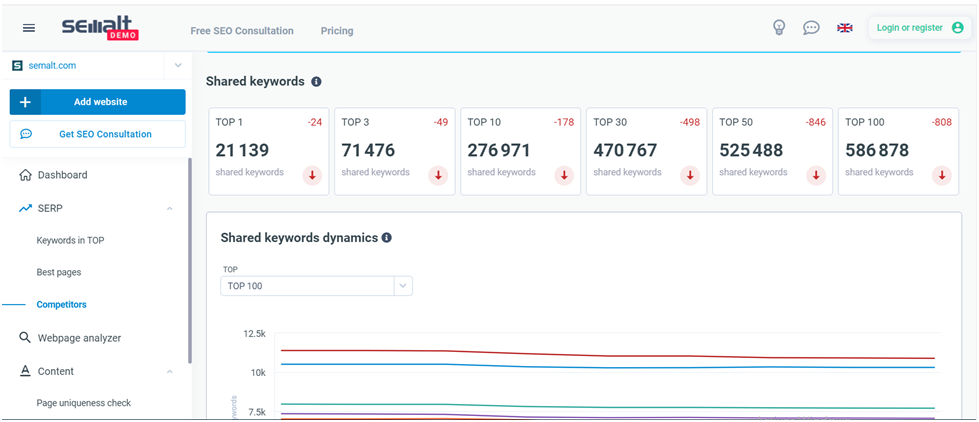Semalt Expert: SEO For Software Companies

All kinds of IT companies and software vendors can easily acquire customers from Google. Unfortunately, due to some sort of self-imposed compulsion, this doesn't happen. In this article, you'll learn how to get new customer inquiries from search engines, as well as how to reach out to potential employees and facilitate recruitment
Where to start?
As an IT company, you usually create applications or implement solutions for other companies or even corporations. As you know, a cobbler can't walk without shoes, so as a decent software company, you build a super professional website. This is where the first and most important mistake appears. It is associated with both Google and the customer acquisition process itself.
When you focus on technology, you forget the starting point - the content of the page. No entrepreneur will cooperate with a website that is just excellent from a technological point. You have to know that for customers, your website is just an information carrier or, more visually, a package.
It is known that the packaging is important, but it's its content that will convince the customer to send a request. And not only the customer, because Google also focuses on what you should convey, not in what form you convey it.
You need to start by defining your prospect's profile and focusing on their needs. Decision-makers in large companies also use Google, but contrary to all appearances, they do not enter phrases such as "software company" or "IT company" into the search engine.
These people have their own problems and are looking for solutions. That's why, from Google's perspective, self-help content or case studies that show how you operate are very important.
So before you start planning your website in terms of technology, layout or graphics, plan its structure. To start, you need to have a list of specific sub-pages that will meet a specific need. The more needs you have, the more sub-pages you have to plan.
Choose the right keywords
Keywords are a representation of intent or need. A person who enters a given phrase into Google needs something. Full keyword analysis with an appropriate tool will show you the greatness of the need you can meet. Of course, meeting such a need won't always involve sending a request, but in this way, you build a brand in the industry, and that's a lot. From experience, I can say that phrases like:
- computer company;
- Computer + municipal company;
- Software Company;
- etc.
… are some of the worst phrases in terms of lead generation or direct service requests.
This is for several reasons. First of all, everyone thinks so, and there is a huge amount of competition for such broad phrases. A lot of companies trying to rank for such phrases make it expensive for you to rank for them. With the same SEO budget, you can launch a really effective SEO campaign that will get many more leads.
Second, even if you are in the top position on Google for a phrase like "software house", you are not the only one on the first page. Besides, Companies in the second, third and other positions are also gaining traffic. So you are competing with them for the same customer. You may probably have already received an email asking you where your competitors are, right?
Lead to a situation where the client wants to cooperate with you
It is much better to lead to a situation where the customer wants to cooperate with you. This requires a different approach to SEO and content marketing in general, but it can be achieved by building your company brand.
The number of keywords in the IT industry is huge and can be in the hundreds of thousands, especially if we are also looking for employees. Imagine dealing with mobile applications, after all, your customers will be looking for exactly what they need:
- mobile applications for restaurants;
- mobile applications for hotels;
- mobile applications for transportation;
- mobile applications for companies X.
Or maybe they'll Google their problem:
- how to streamline ordering in a restaurant;
- how to speed up a hotel check-in;
- how to track cars and driving times;
- how to solve the problem X.
You, as a software company, offer one or more services. From the perspective of potential customers, you solve hundreds or even thousands of problems that could arise. What you sell is not what your customers buy.
Planning the structure
A large number of sub-pages that contain content appropriate for a given need is a challenge at the planning stage. That's why you need to plan the structure of the website first, then implement the technology or graphics.
Knowing the keywords and, more specifically, the needs of the potential customers, you can plan all the sub-pages and then organize them in the appropriate structure.
At this point, it is important for you to know that by planning such a structure, we put users in a comfortable situation:
- They enter their needs into Google
- They see a search result that meets these needs and promises a solution
- The landing page answers their questions
This is a much better model than trying to reach every potential customer with one or more subpages focused on what you offer, not on the customer's needs.
Start creating your content

Knowing the structure of the website, you know which sub-pages you need to create to meet the needs of potential customers. Now it's time to create the content for these pages.
You need at least 3 types of content:
- content related to your offer (subpages with your services);
- content related to user intent (sub-pages with a response to needs - e.g. an application for a restaurant, etc.);
- Advisory content, i.e. a blog with a solution to potential customers' problems.
Create your auction content as quickly as possible. On the other hand, the content of the blogs and sub-pages for the different types of intentions should be written regularly. In general, we suggest that clients publish at least 4 blog posts per month (once a week) as a minimum. Client-specific content can be staggered to publish all planned content within the first few months of the campaign launch.
Regularity is very important here. An SEO campaign is primarily about publishing new content and optimizing it later. Without this, the business will not move forward. No link will help you if you have nothing to link to - these pages must exist.
The form of the content
When it comes to positioning a corporate blog, I have to mention its form here. The ideal option is to write evergreen content (they are always up to date). Writing about temporary trends, etc. always reduces the effectiveness, because such an article is "on the wave" for a short period. On the other hand, content written for potential customers' issues will generate traffic, and publishing it regularly will constantly increase that volume.
In the case of software companies or IT companies looking for employees, it is advisable to write separate "blogs":
- one for potential customers with business knowledge (solutions to their problems);
- the second one for potential candidates who have the necessary knowledge for their position.
A potential customer may enter a phrase such as "how to speed up service in a restaurant", if you create mobile apps, you are certainly able to solve this problem or show a case study from a similar implementation.
By sharing valuable content, you build a brand - whether in the eyes of customers or potential employees. Google presence builds a brand, after all, no one will visit your website and send a query after a minute. Such a person needs to know you, and you can achieve this by writing content and possibly adding remarketing, which will increase the number of touchpoints with your brand.
Technology
In fact, the new technology in which you build your website does not make any impression on Google and even forces the search engine robots to make more effort. Crawling and indexing a heavy page written in a modern framework using a headless CMS can be problematic if not properly implemented.
Overall, from Google's point of view, I don't recommend JS frameworks that render content dynamically. It's not because they're bad, it's just Google still has problems rendering its content. Of course, it can be done well, but it will be much more expensive.
If you want to build a website in one of the popular frameworks, you must take care of the SSR, i.e. server-side rendering. With the SSR, Google will get pre-rendered URLs, and the crawling process will be much easier. In addition, the use of the SSR significantly reduces the number of errors that may occur during the website implementation process.
Linkbuilding
When it comes to SEO / positioning for software houses or IT companies, it is impossible not to mention the links that need to be obtained. The competition is so fierce that I can say blindly - you will need good quality links.
Two points need to be made at this stage:
First, you need to have a place to link. Directing links only to the home page is very old times. So let's go back to the basics - you need to have all the offer or how-to pages that you can link to thematically. After all, they are to appear as search results. The linking strategy must therefore be the same as your overall SEO strategy. Links are an activity designed to enhance your content. Without content, they won't help in any way.
The second thing is the quality of the links. Buying hundreds of links from forums, directories, or other such places is a waste of time and money. At the moment, the only sensible form of obtaining links is sponsored articles, which can additionally have a positive impact on the image.
It would be best to publish such articles on industry portals or IT blogs, of which there are a lot. However, it will not be cheap, one sponsored article may even cost several hundred dollars. An alternative here will be information portals that are characterized by the best price-quality ratio.
If you already have content sites that you can link to, I suggest starting by publishing 1-2 sponsored articles per month (on news sites).
What is the most important thing in SEO for a software house / IT company?
As you already know, content plays a huge role from the positioning point of view. There is no need to expect an increase in traffic while optimizing the website only technically. Visibility needs fuel, and that fuel is content that is useful to potential customers.
The most important thing in all this is that your content is structured with the right keywords. However, it is important to understand that the choice of these keywords must be done with the help of SEO tools qualified for this task. A well-prepared SEO strategy will eliminate all problems related to content duplication and keyword cannibalization.

The website must be as extensive as possible (we are talking about structure) to respond to the various intentions of potential customers. If you do it right - you will get a lot of valuable traffic. Think of your website as building a brand in the eyes of Google. Show your knowledge. Show that you know what you do. This is the best way to get the specific inquiries you care about.
What effects to expect?
Positioning a software house on Google is the easier part of the work you have in front of you in the context of acquiring customers for IT services. If the SEO strategy is well planned and you regularly work on the offer and blog content, the first effects will appear after a few months.
By the first effects, I mean more views of your software house's website on Google, or, for example, more keywords in the TOP50 according to a Dedicated SEO Dashboard type tool. Only later the number of visits to the site with better and better phrases will start to grow and increase.

Theoretically, you can get a large amount of traffic, since the potential in the IT industry is huge. Remember, however, that movement alone is not enough. Your website must also be optimized in terms of achieving business goals, but I will discuss this topic in a separate article.

